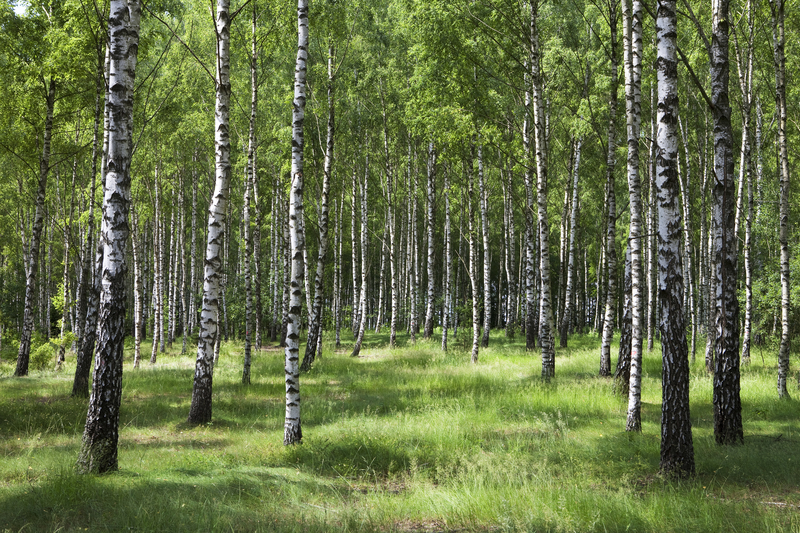The only downside to edible bark is that you can kill the tree in the process if you're not careful. With too many forests being cut down already due to human intervention, we don't want to further contribute to a declining tree population. Below are a few ways to harvest edible bark without harming the tree. If you're not yet ready to eat the bark raw or by frying it as “bacon”, then you can use it as a natural healing remedy!
What Is Edible Bark?
Foragers are after the inner bark, which is the layer just under the rough outer bark. This inner bark includes the phloem, cambium, and outer secondary xylem (sapwood)..
These tissues combine in a layer that is soft, lightly sweet, and more nutrient-dense and digestible than the outer bark or the heartwood.
This is the layer that contains the transport tissues through which much of the water and minerals comes up from the roots.
How NOT to Kill a Tree When You Harvest Its Bark
Once you understand that the inner bark is the transport zone for water, nutrients, and carbohydrates in a tree, it becomes obvious why “girdling” the tree can kill it. Girdling is cutting off a strip of bark around the entire circumference of the trunk.
The gap in the transport zone kills the tree. What we need to do as foragers, if we want to harvest inner bark without killing the tree, is ensure that there is plenty of intact cambium, phloem, and sapwood around the trunk.
A big, gaping hole in the bark can be an invitation to fungal infections and bug problems.
Windfall
The most surefire way not to hurt the tree is to keep an eye out for freshly fallen branches after a storm. If you find some freshly fallen branches within 2 to 3 weeks after a storm, go for it.
Come in at an angle with a pocket knife and work down the branch in strips. You’ll be able to feel the harder wood layer below the inner bark. Strip off the layer just outside that. You’ll be getting the dry outer bark as well, but you can peel or rub that off later.
Prune a Branch
Another option is to prune a branch from the tree or shrub and then strip the inner bark from the branch. Correct pruning methods should be used to minimize disease potential, most importantly cutting just past the branch collar. The branch collar is the slightly wider area where the branch attaches to the tree. It contains special tissues that rapidly heal the cut, but they can’t do their job if you cut off the branch flush with the trunk.
The Narrow Vertical Cut
The last method is a narrow, vertical cut on the main trunk.
Use a knife to score a vertical rectangle in the bark. The rectangle should be no wider than an inch. This is important, because the wider the wound, the longer it will take the tree to heal, so keep it small. Making the strip vertical rather than horizontal minimizes interruption of the tree’s food and water transport zones.
Keep scratching across the four sides of the rectangle in a tic-tac-toe-like pattern until you hit the harder wood beneath the bark. Slip the edge of your knife under between the soft inner bark layer and the wood, and pull the inner bark off in strips.
You should not use this method if you know you are in a region where Dutch elm disease, butternut canker, mountain pine beetle, or emerald ash borers, or other tree diseases or infestations are a problem.
Trees with the Tastiest Edible Bark
- Birch
- Linden
- Slippery Elm
- Pine
Pine Bark “Bacon” Recipe
Use only thin strips of fresh, moist pine inner bark for this recipe.
Remove the outer bark and any green, resinous parts. Heat a lipid of your choice in a skillet over medium high heat.
Fry the pine bark strips on each side until they turn reddish brown, about 1 – 2 minutes per side. Remove from the pan and sprinkle with salt while still hot.
Other Uses for Edible Bark
Birch bark makes a lovely infusion. Ground into a flour, it can be used in baked goods.
Slippery elm bark has a mucilaginous texture when cooked in water. This means you can boil it up into a thick porridge. It has a lovely maple-like flavor. And it soothes sore throats, coughs, and tummy troubles.
Another inner bark with medicinal properties is willow. It contains salicin, which the body converts into salicylic acid, an anti-inflammatory and pain-relieving precursor for aspirin.
Have you tried eating bark? Do you have any other advice or recipes for it?
Article Source: Mother Earth News
